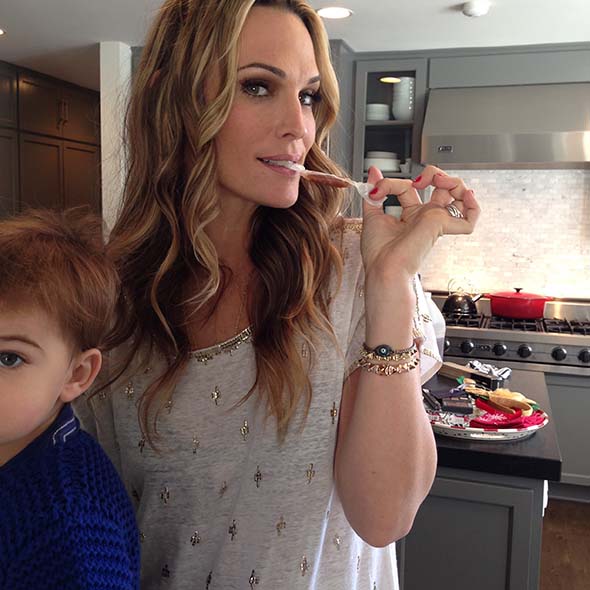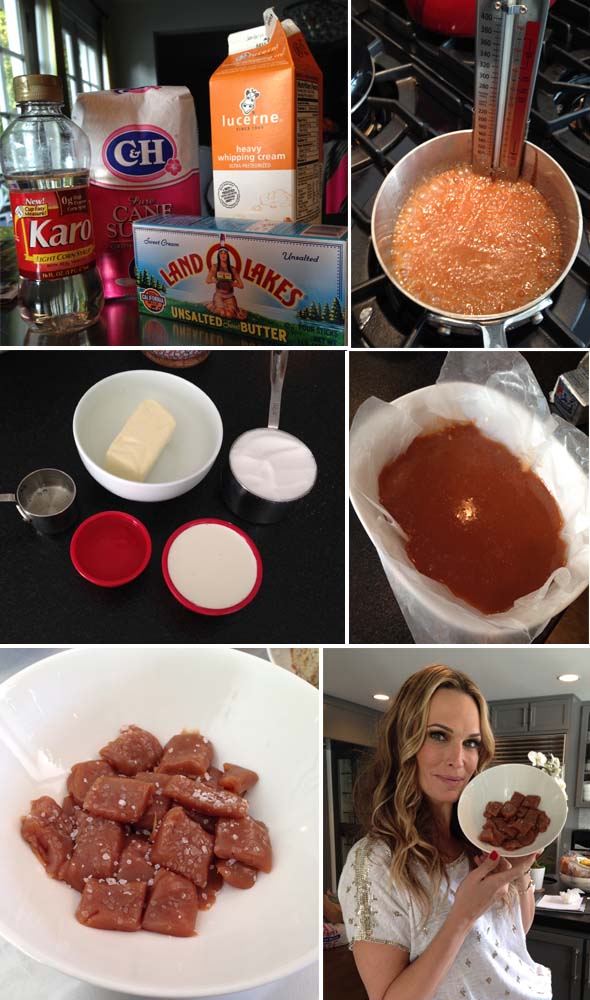Beauty...



When it comes to sweet vs. savory, I’d have to say I usually go the savory route. But of course, during Christmas-time, this tends to change a tad. But even when I am going for sweet, I try to stick “salty” in there somewhere. That’s why this year I decided to experiment with making my very own salted caramel. I am pretty much OB-sessed with all things salted caramel, and this recipe did NOT disappoint. In fact, it was pretty AH-mazing.
Now, caramel is a tricky little thing. It doesn’t actually involve many ingredients at all, but it’s super precise and very dependent on the exact temperature of ingredients. During my first attempt I walked away from the pot for 30 seconds and came back to burnt, black caramel. Not a good look. On my second try, I made the heat a little lower and literally did not move from the stove until it was done. Success!
I wound up with dreamily creamy, perfectly sticky caramel. I quickly transferred it to a baking dish and drizzled it (who am I kidding… drenched it) with coarse sea salt. I mean it is salted caramel, right? Anyway, after letting it sit for a few hours, I took it out and cut it into squares. It was DE-lish.
Not only was it fun to put in a bowl for all of us to snack on, but it would also make an AH-dorable gift or stocking stuffer for the holidays. Cut up wax paper and wrap each individual square for a homemade, DIY look.
#MollyTips: A good candy thermometer (or any thermometer that can stick onto the side of a pan) is essential for this to work!

Lightly oil a 9 x 5 inch loaf pan then measure and cut a piece of parchment paper that will fit inside the pan and come up the sides by at least 1 inch. Next, lightly oil the parchment paper and place into the pan. Set the pan aside.
Cut butter into 8 pieces then combine with heavy cream in a small microwave-safe bowl. Heat in the microwave for 1 to 2 minutes until hot and butter has melted. Set aside, we will use this later.
In a small saucepan combine the water and corn syrup. Heat over medium heat until the sugar has come to a boil. Then, cover with a lid for 1 minute.
Remove lid then attach a candy thermometer to the side of the saucepan. Then, cook sugar for 5 to 10 minutes, until the sugar reaches a temperature of 320 degrees F (160 degrees C). At this temperature, the sugar will take on a light amber color around the edges of the pan.
The moment the sugar reaches 320 degrees F, carefully pour about a sixth of the butter and cream mixture then stir, using the base of the candy thermometer to incorporate it. Repeat with the remaining cream and butter (adding a sixth of it at a time then stirring). The sugar will bubble violently as you add the butter and cream – so do this carefully and slowly to prevent the mixture from bubbling over the sides of the saucepan.
By adding the cream and butter, the temperature will drop. Now, continue cooking for another 5 to 10 minutes, until the caramel reaches a temperature of 240 degrees F (115 degrees C). This will create a soft caramel, if you want slightly harder caramels, bring the temperature closer to 245 degrees F (118 degrees C).
The moment the caramel reaches your desired temperature, pour into the prepared loaf pan. Cool 20 to 30 minutes then scatter the salt over the caramel. Then, let the caramel cool 3 1/2 hours.
Unmold the caramel. If the caramel is too soft to work with, place into the refrigerator 30 to 45 minutes to firm up. Then, use a large sharp knife to cut into your desired shape. We like to cut into 1-inch by 1/2-inch rectangles.
Wrap caramels in plastic wrap or waxed paper and enjoy immediately, or you can refrigerate or freeze for enjoying later.